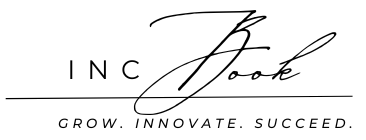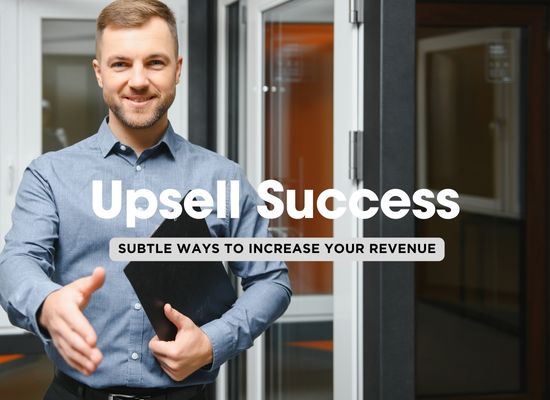Upselling can significantly boost your sales and improve customer satisfaction—when done right. The key is to offer value and present additional options that genuinely benefit your customers, rather than making them feel pressured. By taking a customer-focused approach, you can build trust, strengthen relationships, and increase revenue without coming across as salesy. Here’s how to master the art of upselling without turning customers away:
Step 1: Focus on Solving Problems 💡
Why it works: Customers are more likely to accept an upsell if it addresses a specific need or enhances their experience.
- How to do it:
- Identify pain points or challenges the customer might face.
- Recommend products or services that directly solve those issues.
- For example: If a customer buys a laptop, suggest an extended warranty or a high-quality case to protect their investment.
- Pro Tip: Use phrases like, “Many customers find this helpful because…”. This frames the upsell as a solution rather than a pitch.
- Bonus Tip: Avoid generic recommendations. Tailor your suggestion based on the customer’s unique situation.
Step 2: Offer Choices, Not Pressure 🛍️
Why it works: Giving customers control over their decisions creates a positive buying experience and reduces resistance.
- How to do it:
- Present a couple of related options at different price points.
- Use non-aggressive language, such as: “If you’re interested, we also have…”.
- Highlight the benefits of each option, leaving the final decision up to them.
- Example Scenario: If a customer is purchasing a pair of shoes, mention optional items like shoe care kits or insoles and explain how they can extend the product’s life or enhance comfort.
- Pro Tip: Use visual aids like images or side-by-side comparisons to make the options more appealing and easier to understand.
- Bonus Tip: Make it clear that the main purchase is sufficient, so the customer doesn’t feel their current choice is inadequate.
Step 3: Emphasize Value Over Cost 💰
Why it works: Customers are more likely to accept an upsell if they feel they’re getting added value for their money, not just spending more.
- How to do it:
- Highlight the long-term benefits of the upsell. For example: “This subscription plan includes premium support, which many customers say saves them time and frustration.”
- Use numbers to demonstrate value, such as: “By upgrading, you’ll save 20% annually on replacement costs.”
- Explain how the upsell enhances their original purchase or helps them achieve better results.
- Example Scenario: If a customer is buying a gym membership, suggest adding personal training sessions by saying: “Our members who add personal training achieve their goals 30% faster.”
- Pro Tip: Avoid framing the upsell as a “splurge” or extra expense; instead, focus on how it provides better overall results.
- Bonus Tip: Position the upsell as an investment, not just an optional luxury.
Step 4: Use Timing to Your Advantage ⏰
Why it works: Offering the upsell at the right moment ensures it feels natural and relevant, rather than intrusive.
- How to do it:
- Present the upsell after the customer has made their primary decision. This keeps them focused and prevents overwhelm.
- Use triggers like “Before we finalize your purchase, I wanted to mention…”.
- Introduce upsells that complement the item they’re already buying or their overall experience.
- Example Scenario: At a coffee shop, suggest adding a pastry or drink upgrade at the checkout: “Would you like to make that a large for just $1 more?”
- Pro Tip: Avoid upselling too early in the customer journey, as it might seem like you’re prioritizing profit over their needs.
- Bonus Tip: If the customer hesitates, let them know they can still decide later, keeping the option open without pressure.
Step 5: Personalize the Experience 🧑💻
Why it works: Customers are more likely to respond positively to upsells that feel tailored to their preferences or past purchases.
- How to do it:
- Reference the customer’s purchase history or preferences when suggesting additional products or services. For example: “Since you enjoyed [product], you might love this matching accessory.”
- Pay attention to details in the current purchase, such as size, color, or features, to recommend relevant upsells.
- Use tools like CRM software to track customer data and make informed suggestions.
- Example Scenario: If a customer buys a camera, suggest a compatible lens based on the type of photography they’re interested in.
- Pro Tip: Always keep the customer’s needs in mind—personalization works best when it’s authentic, not forced.
- Bonus Tip: Use their name and acknowledge their taste to create a connection.
Step 6: Leverage Social Proof 📈
Why it works: Customers trust the experiences of others, making them more likely to consider an upsell when they know others have found it valuable.
- How to do it:
- Share customer reviews or testimonials about the upsell product. For example: “This upgrade is our most popular option, and customers love it for its added convenience.”
- Highlight stats like: “90% of customers who purchased this also added [upsell].”
- Use phrases like “Many customers who chose [product] also find [upsell] incredibly helpful.”
- Example Scenario: If selling software, mention how other businesses benefited from upgrading to a premium plan: “Our pro plan users report saving 10 hours a week with automation features.”
- Pro Tip: Display social proof visually through badges, star ratings, or user stories.
- Bonus Tip: Keep the proof relevant to the customer’s goals to make it compelling and relatable.
Step 7: Create a Sense of Urgency ⏳
Why it works: A time-sensitive offer motivates customers to make decisions quickly without feeling pressured.
- How to do it:
- Use limited-time offers, such as: “This bundle deal is only available today.”
- Highlight stock availability: “Only 3 left in stock—don’t miss out!”
- Offer discounts for immediate upgrades: “Upgrade now and save 15% off your purchase.”
- Example Scenario: If selling a subscription service, mention a seasonal deal: “Get 2 months free if you upgrade before midnight.”
- Pro Tip: Avoid overusing urgency tactics to prevent them from feeling gimmicky.
- Bonus Tip: Pair urgency with value by emphasizing the benefits customers will gain if they act now.
Step 8: Always Respect the Customer’s Decision 🤝
Why it works: Ending the interaction on a positive note strengthens customer trust and increases the likelihood of future upsells.
- How to do it:
- If the customer declines the upsell, thank them for their purchase and express your appreciation.
- Leave the door open by saying: “Feel free to reach out if you change your mind—we’re here to help.”
- Never insist or revisit the upsell after a clear “no,” as it can sour the experience.
- Example Scenario: After a customer declines an extended warranty, reply with: “No problem at all! Let us know if there’s anything else you need.”
- Pro Tip: Use post-purchase follow-ups to reintroduce the upsell gently, such as emails that say: “You might still be interested in…”.
- Bonus Tip: A friendly, no-pressure approach leaves the customer feeling valued and respected, making them more likely to return.
Upselling doesn’t have to feel pushy or awkward—it’s all about adding value to the customer’s experience. By focusing on their needs, offering personalized recommendations, and maintaining a no-pressure attitude, you can build trust and loyalty while boosting your bottom line.
Remember, the best upsells enhance the customer’s purchase, not your profits. Approach every interaction with genuine care, and you’ll find upselling to be a natural, effective part of your business strategy.



